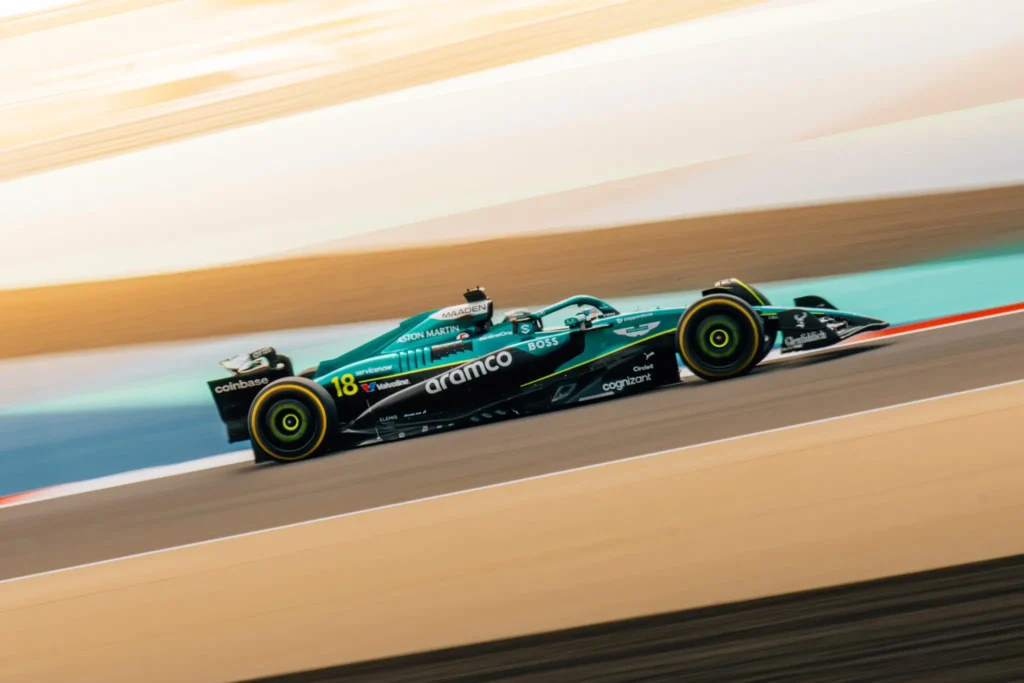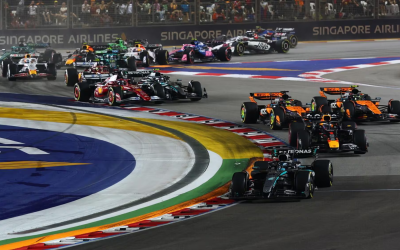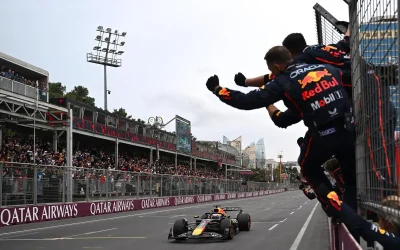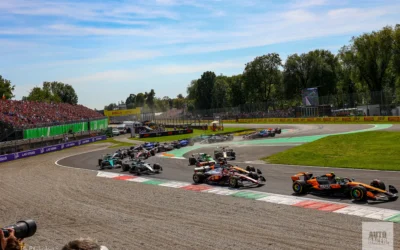Aston Martin took the(virtual) wraps off the AMR25 on Sunday, before taking to track in Bahrain on Monday. They completed the first 200km filming day available for the 2025 season.
The Silverstone team’s engineers want to make sure their assembly and factory work has been done effectively. Yesterday’s run should help avoid any hitches at the start of testing. It’s the first chance for Fernando Alonso and Lance Stroll to get a feel for the car after their simulator work. They will look for the same feedback world.
Andy Cowell, Aston Martin’s Team Principal, has spoken about making the AMR25 more driveable. Here’s how it’s changed compared to the AMR24.
Filming day revealed the true AMR25: new front with revised wing and nose but the push-rod remains
In the front end, Aston Martin has not revolutionised the aerodynamic package of their old car. However, there have still made some obvious changes. Aston Martin’s new organizational structure, with the arrivals of Newey and the ex-Ferrari Enrico Cardile, have not had time to make an impact on the 2025 project.
2025 already feels like a transition year ahead of 2026, when the engine partnership with Honda will also arrive.
The 2025 car, for obvious reasons, maintains the push-rod front suspension, without any mechanical upheaval of the single-seater. Thus, the team have given up some of the aerodynamic advantages that other teams have deemed essential to pursue.
However, as also demonstrated by Ferrari in 2024, the push-rod can have its advantages, even if it entails limitations in terms of aerodynamics and development. The triangle cover is slightly updated and the double inclination design of the upper arm remains.
However, the major evolution is in the front wing area, which could be appreciated from the images published while the AMR25 was busy covering its kilometres on the Sakhir circuit.
The design has changed profoundly, with a more loaded central part and more pronounced outwash effect in the final phase of the flap.
Aston Martin’s mainplane has also been modified with a central portion that sees a more pronounced ‘lip’ that has the aim of collecting more flow in the lower part of the front. The nose has been modified and now connects directly to the main profile, eliminating all the blowing.

The front of the 2024 car was the cause of an unstable car in the different phases of corners. Aston’s drivers often complained about a balance that constantly changed, making the car unpredictable and giving them little confidence.
The AMR25’s 2025 front aims to give stability to the aerodynamic platform. This will be in synergy with the rear, to allow Alonso and Stroll to have more freedoms to push the car.
Updates to the entire body are visible. New sidepod design and cooling
Aston’s most visible changes are to be found in the central area of the single-seater. The body has undergone significant updates, taking inspiration from a mix of solutions already seen, with a strong imprint in the direction of McLaren post-Miami.
The sidepod inlets do not follow the apparent new trend of some top teams, who returned to a “P” inlet. Instead, Aston have carried out the reversal of the front lip.
Over the winter, Aston Martin’s undercut has been heavily excavated to free up space. The sides have been further narrowed in search of further aerodynamic efficiency.

The visible changes are a direct consequence of a relocation of some of the radiating masses under the AMR25 engine hood.
Aston Martin’s technicians have tried to further compact all the radiating masses for the power unit. This is to provide more room a further tapering of the sidepod slide.
There are more changes, with a fin that covers the entire length of the engine hood. This design that also includes two ‘steps’ in the initial and final part of it.
There, significant tapering work has been carried out, behind the airbox which instead appears slightly larger.
It is reasonable to expect that Aston Martin have relocated part of the exchangers from the sidepods for aerodynamic reasons.
The engine hood in the “tray” area has vents and a down-wash trend faithful to the McLaren approach from last season, as well as part of the fin design.

The rear is Mercedes 2025. Modifications also to the braking system and a new rear wing
It may be less visible, but some of the most important changes are a new design of the brake ducts, both front and rear.
Aston Martin relies specifically on Brembo for the calipers while the discs and pads are from Carbon Industries, the same supplier as Mercedes.
With a development aimed at improving the driveability and stability of the car, Aston Martin has also worked on a different management of the flows at the rear. This has required a different design of the rear wing compared to the 2024 specifications.
The new wing features the now classic “ears” at the endplate cut to improve efficiency at the rear.

The entire rear end mechanically comes directly from Mercedes, with the new gearbox and push-rod rear suspension.
Aston Martin’s diffuser and the central keel have undergone modifications to find load. Meanwhile, the entire floor design has changed – both regarding in the external edge and the venturi inlets




